Making a Bronze Statue
On March 30, 2016
- How It's Done
- The model for the sculpture was Jennifer Carroll, the actor who portrays Lucy Maud in the play “Maud of Leaskdale”.
- The first step was the creation of a quarter-scale model in clay.
- The small model was later cast in resin, with a bronze patina. This small version is a limited-edition sculpture (and is available).
- The small model was scanned in a digital scanner at the foundry, to produce a 3-D digital file to drive a computer-controlled cutting head that cut out a full-size form (armature) in high-density foam.
- The foam armature, fully assembled. The bench had been designed earlier and fabricated with laser-cutting technology. The same computer file was used to cut both the large bench and copies of the bench for the small version.
- The sculptor then adds a “skin” of clay, which becomes the final sculpture, with all of the detail and texture. The clay skin is about half an inch thick.
- The sculptor working on fine detail on the final clay figure. The wooden skewers are to hold the parts in place – arms, hands, head and book come apart for the casting process.
- The final clay goes to the foundry and the seven component parts are cast in bronze, using the clay to make the molds. The body was cast in two parts and welded together.
- The final figure, fully welded together, at the foundry. The bronze has been sand-blasted to give it a uniform texture. The dull-looking colour is the bronze before the application of the patina.
- The sculptor working on touching up the final sculpture with the patina added. The patina gives the finished colouring, and is applied with a combination of chemicals and heat.
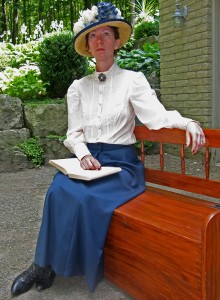
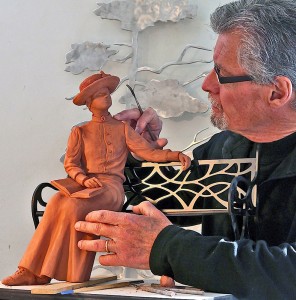
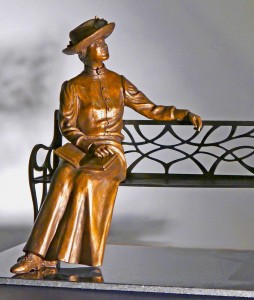
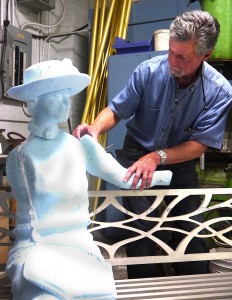
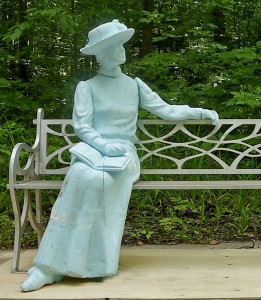
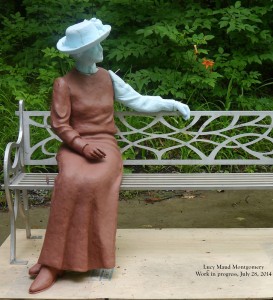
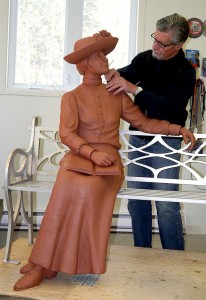
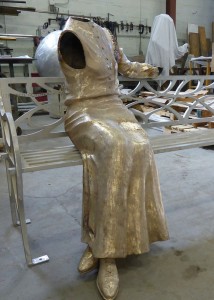
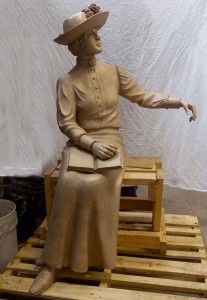
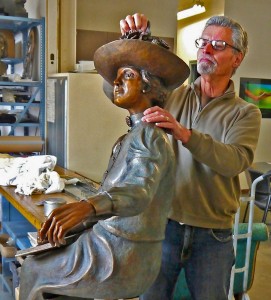
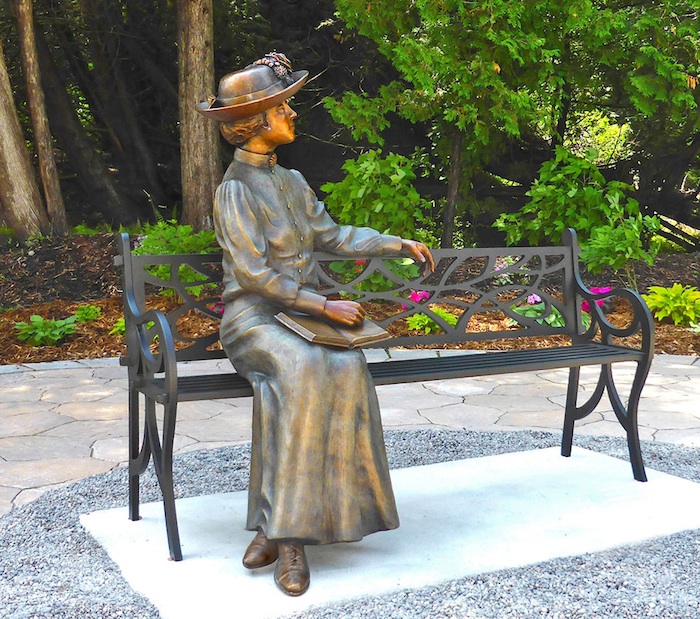
Comments are Disabled